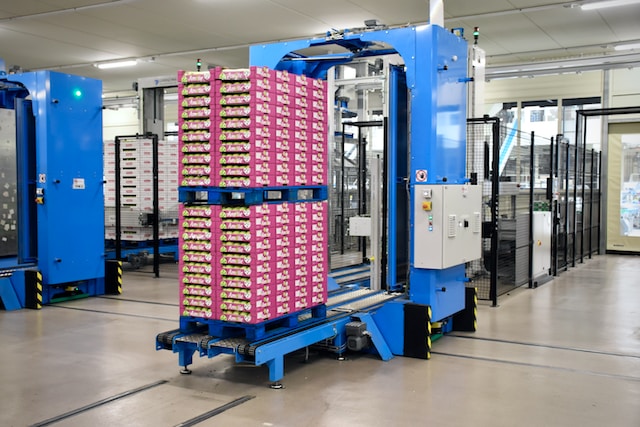
A Chemical storage warehouse plays a critical role in various industries, from manufacturing to research. However, the handling and storage of hazardous chemicals within these facilities require meticulous attention to safety and compliance.
In this article, we will explore the key considerations for safely storing hazardous chemicals in a storage warehouse, including the definition of hazardous chemicals, necessary certifications, and essential rules to follow. By adhering to these guidelines, industries can ensure both the safety of their personnel and the protection of the environment.
Understanding Hazardous Chemicals
Understanding hazardous chemicals is essential for ensuring the safety of individuals and the environment. These substances often have the potential to cause harm, ranging from minor health issues to catastrophic accidents.
Toxic chemicals can lead to poisoning, while flammable ones may trigger fires or explosions. Reactive chemicals can undergo violent reactions, and corrosive substances can cause severe damage upon contact with skin or materials.
Recognizing these inherent properties not only guides safe storage practices but also informs emergency response protocols, ultimately minimizing the risks associated with handling and storing hazardous chemicals. Proper identification is the first step towards a secure and responsible approach to chemical management.
Certifications for Chemical Industries
In chemical manufacturing, ensuring safety, environmental responsibility, and compliance with regulatory standards is paramount. Before we check out the essential rules for storing hazardous chemicals in a chemical warehouse, it’s crucial to establish the certifications that chemical industries should earnestly adhere to.
These certifications not only demonstrate a commitment to safety and sustainability but also serve as guidelines for maintaining the highest standards in chemical handling and storage.
- ISO 14001 Certification
The ISO 14001 certification stands as an internationally recognized benchmark for environmental management systems. It underscores an organization’s dedication to minimizing its environmental footprint, which extends to the proper handling and disposal of chemicals. This certification provides a structured framework for assessing environmental impact and implementing strategies to mitigate it. For chemical industries, ISO 14001 fosters a culture of responsible chemical management, reducing adverse environmental effects and ensuring compliance with stringent global standards.
- OSHA Compliance
Occupational Safety and Health Administration (OSHA) regulations serve as the bedrock of workplace safety in the United States. For chemical industries, OSHA compliance is a non-negotiable requirement. It encompasses various aspects of employee well-being, including chemical handling and storage. Adherence to OSHA standards guarantees that workers are protected from chemical-related hazards and that rigorous safety protocols are in place. This commitment to employee safety not only prevents accidents but also maintains a harmonious and productive work environment.
- Hazardous Materials Storage Permit
In many regions, chemical storage facilities are mandated to obtain a Hazardous Materials Storage Permit. This permit serves as a critical oversight mechanism, ensuring that chemical storage facilities meet stringent safety and environmental standards.
It encompasses comprehensive inspections, adherence to zoning regulations, and emergency response plans. Obtaining this permit is not only a legal requirement but also a testament to an industry’s commitment to safeguarding the community, environment, and employees from the potential risks associated with hazardous chemicals.
These certifications collectively form a robust foundation for chemical industries, emphasizing responsible environmental practices, unwavering commitment to workplace safety, and strict adherence to local and international regulations. They signal to stakeholders, regulatory bodies, and the public that the industry takes its responsibilities seriously and strives for excellence in chemical management.
Eight Rules for Safe Chemical Storage
To ensure the well-being of employees, the protection of the environment, and the adherence to stringent regulations, it is crucial to follow a set of meticulous rules for safe chemical storage.
Let’s explore eight essential rules that every chemical storage warehouse should be aware of, from proper labeling to stringent documentation. By embracing these rules, industries can foster a culture of safety and responsibility while minimizing risks associated with handling and storing hazardous chemicals.
- Proper Labeling
Proper Labeling is the first line of defense when it comes to chemical safety. Each container of hazardous chemicals must bear a clear label displaying the chemical’s name, hazard warnings, and usage instructions. This straightforward yet critical step enables quick identification, ensuring that chemicals are handled with the caution they deserve.
- Segregation
Segregation is the practice of storing chemicals with incompatible properties separately. Acids should be kept well away from bases, and flammable substances should be isolated from oxidizers. By rigorously adhering to this rule, chemical warehouses prevent unwanted reactions that could lead to dangerous outcomes.
- Ventilation
Adequate ventilation is indispensable for chemical storage facilities. It serves the dual purpose of dispersing potentially harmful fumes and maintaining optimal air quality. The implementation of exhaust systems is a proactive measure to prevent the accumulation of hazardous gases within the storage environment.
- Fire Safety
Fire Safety in chemical storage is non-negotiable. To minimize the risk of fire-related accidents, facilities should install fire-resistant storage cabinets, provide readily accessible fire extinguishers, and deploy smoke detectors. Moreover, flammable chemicals should find their place in designated, fireproof areas, further enhancing safety.
- Spill Containment
Accidents happen, and when they involve hazardous chemicals, a swift response is paramount. Chemical storage warehouses should have spill kits readily available, and employees must be trained in their use. A well-executed response to chemical spills minimizes both environmental damage and potential health risks.
- Temperature Control
Some chemicals are highly sensitive to temperature variations. To prevent chemical degradation or, in extreme cases, explosions, maintaining appropriate temperature conditions is imperative. Diligent temperature control safeguards the integrity of stored chemicals and ensures the safety of the facility.
- Emergency Response
Emergency Response planning is an ongoing process. Chemical storage facilities should develop comprehensive emergency response plans and practice them regularly. Ensuring that all employees are well-versed in the correct procedures for chemical spills, fires, or accidents enhances safety and minimizes confusion during critical situations.
- Documentation
Documentation is the backbone of regulatory compliance and effective emergency response. Maintaining comprehensive records of all chemicals in the warehouse, including safety data sheets (SDS), purchase dates, and disposal instructions, is indispensable. These records not only demonstrate commitment to safety but also facilitate swift and informed decision-making in emergencies.
Incorporating these eight rules into daily operations fosters a culture of safety and responsibility within chemical warehouses. It not only safeguards personnel and the environment but also ensures compliance with the ever-evolving landscape of chemical regulations. By prioritizing these rules, chemical storage facilities contribute to a safer and more sustainable future for all.

